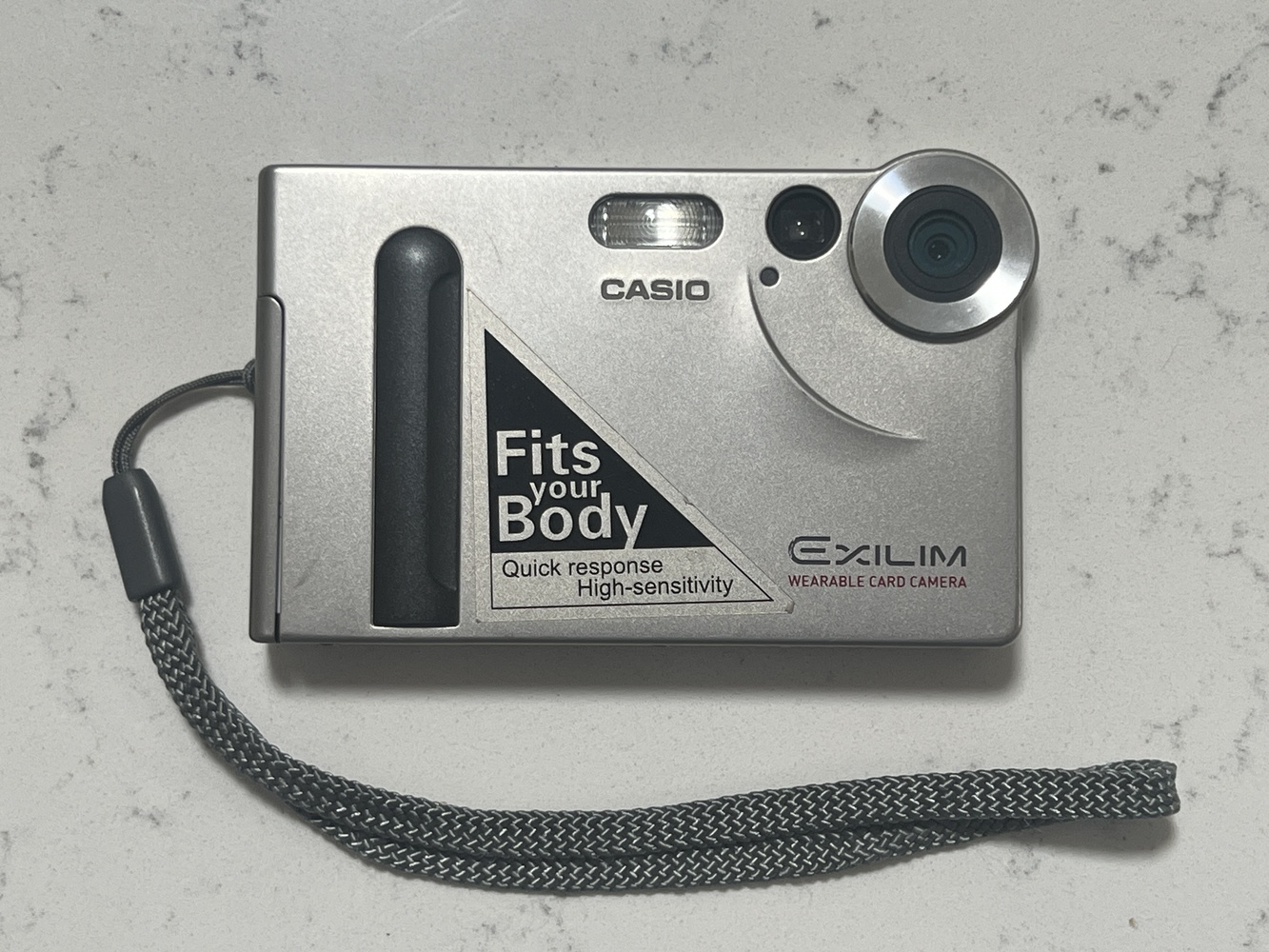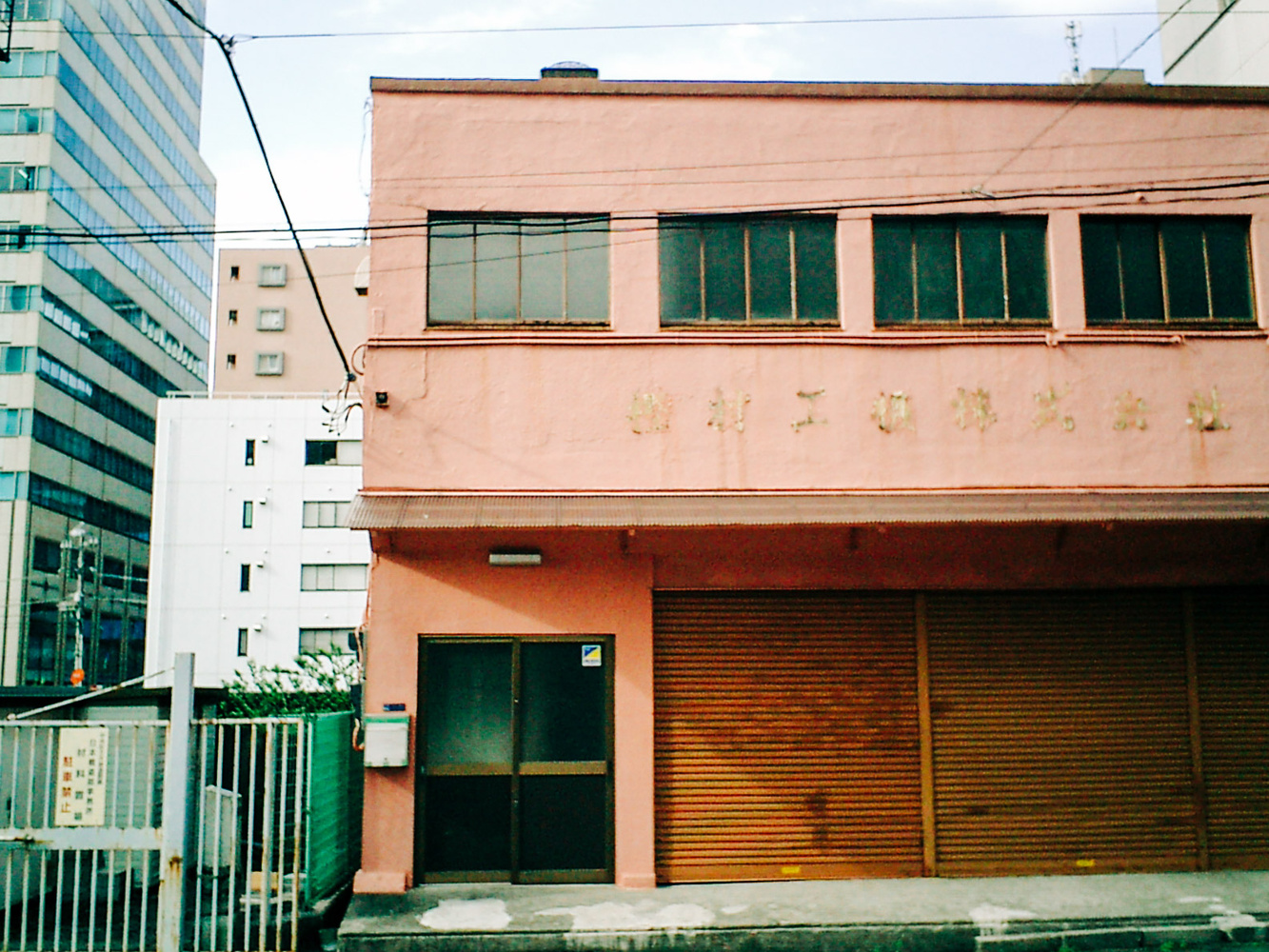If you’re looking for a vintage digicam for your travels, look no further than 2002’s Casio Exilim EX-S1. With a 1.3-megapixel CCD sensor, this ultra-compact digicam is sure to give your photos that early 2000s vibe. About the size of a credit card (though a little thicker), this is the perfect digicam for travel.
I took my EX-S1 to Japan a few months ago and the images have a wonderful distinctive retro charm to them, almost like I went back in a time machine and took them in 2002. I’m sure a lot of photographers would scoff at the idea of using a 1.3-megapixel camera on vacation, but let me tell you, it’s a lot of fun. For the record, I took my Fujifilm X-T5, Ricoh GR III, and film cameras on the trip too.

I love the reflections in the road here in this image taken at Tokyo City Air Terminal overpass.
Casio Exilim EX-S1. Image Copyright © Matt Murray
So, why digicams? Well, why not? In the race to bring out digital cameras with more megapixels and features in the early 2000s, cameras became obsolete at an astonishing pace. Often, within a few months of a camera being released, it was already superseded by a newer and better model.
In our haste to move on to the next bigger and better thing, many of these digicams languished in drawers or sat in the bargain bin at thrift stores. Twenty years on, it’s worth looking at these cameras now to reflect on just how cutting edge they were.

Waiting for the Tokyo Metro.
Casio Exilim EX-S1. Image Copyright © Matt Murray
A recap on Early 2000s Technology
The early 2000s were a fascinating time for consumer products. Rapid advances in technology brought new gadgets to market, which revolutionized our daily lives. This included taking photos and listening to music.
Only Gen Xers and Boomers who clipped a Walkman to their belt can truly appreciate how much better 2001’s iPod was for music on the go. However, new tech took a little longer to impress professional photographers; many were not happy with the quality of digital cameras at the time.

Casio Exilim EX-S1. Image Copyright © Matt Murray
The Dawn of Multipurpose Wearable Tech
The early 2000s were also the dawn of consumer gadgets having multiple purposes. The photos in this article were taken on the Exilim EX-S1, but its slightly more expensive sibling had an added feature. The Casio EX-M1 had the same digital camera functionality as the EX-S1, but added the ability to play MP3s.
This appealed to all those cool kids downloading pirated tunes from torrent sites. (I didn’t do that ever, honest.) This may not seem like a big deal now, but you have to remember it was another was another five years before the first iPhone hit the shelves.
Rather curiously, the EX-S1 calls itself a “wearable card camera.” I said in my original video review of the Casio EX-S1 on YouTube, I don’t know what that means. What are you supposed to do, gaffe tape it to your body?

Casio Exilim EX-S1. Image Copyright © Matt Murray
Japanese Companies Join the Digital Camera Revolution
What I find fascinating about digital cameras of this era is that it wasn’t just traditional camera companies getting in on the act. Sure, you had Nikon, Canon, Olympus, and Fujifilm all wanting a slice of the digital camera market. But you also had other Japanese companies better known for other products also making digital cameras, companies like Epson, Toshiba, JVC, and Sharp. Another well-known name from Japanese tech and the maker of this little digicam: Casio.
For those of us that grew up in the 80s, Casio was well-known for three things: calculators, watches, and electric keyboards. In the mid-90s, they branched out into digital cameras, and by 2002, they launched the Casio Exilim line with two different models. Let’s take a closer look at this marvel.

Casio Exilim EX-S1 Camera Specs
The Casio Exilim EX-S1 is ultra-compact, about as big as a credit card but 0.4 inches (1 cm) thick. It weighs in at just 3.7 oz (105 g) with battery and memory card installed.
The camera has a 1.3-megapixel CCD sensor with 1.2 effective megapixels. This tiny camera has a tiny sensor; it measures just 1/5 of an inch by 1/8 inch (5.33 mm x 4 mm). That fact alone goes some way to explain the picture quality.
The EX-S1 has a fixed lens that’s equal to a 37mm focal length in full frame terms. Unlike some other digital cameras, this is not a good choice for macro photography, as it has a minimum focus distance of just 3.3 feet (1 m). The camera has a nice little 1.6” TFT screen on the back, which is great for composition, as the viewfinder is useless.

With the right subject matter, you'll feel like you've jumped into a time machine.
Casio Exilim EX-S1. Image Copyright © Matt Murray
It has a surprising number of bells and whistles up its sleeve, including a movie mode, digital zooming, exposure compensation, white balance, and flash modes. In my experience, though, it’s best to use this as a fun point and shoot without worrying about the menus.
The camera sold for around $299 USD when it came out. These days, they typically sell for around $100-200 in working order. Of course, there’s a chance you could pick one up for a lot less if you’re lucky.

Casio Exilim EX-S1. Image Copyright © Matt Murray
Memory Card and Batteries
The camera takes both MMC cards and SD cards, though here’s the kicker: it only takes cards up to 2 GB. If you put a card any bigger than 2 GB in the camera, it will turn on but won’t work.
It’s actually hard to find such a small capacity card these days; you might have to trawl eBay for one. Or you could just do what I did when I first got the camera: I had an old 2 GB microSD card in my stash, which I put in an adapter, and it worked perfectly.
The batteries are thin and rechargeable, and you can buy replacements online. You will either need the original dock to charge the battery, or you can just grab a universal battery charger.

One of my favorites from Tokyo: Ueno Park.
Casio Exilim EX-S1. Image Copyright © Matt Murray
Image Quality and Editing
If you’re a pixel-peeper or obsessed with the latest and best tech, this is not the camera for you. However, if you like to have fun with photography and recreate the early 2000s look, this is a great choice.
The images from the EX-S1 have a wonderful retro feeling about them. Choose your subject matter right, and it looks like you jumped in a time machine and got out in 2002. You’re not going to get super-sharp images out of this camera, so you have to be content with a slightly blurry or pixelated look. Think impressionism rather than the Sistine Chapel.
Straight out of camera, the images do look a little washed out, so I suggest adding some contrast and vibrance in Lightroom. This gives colors more pop and makes edges look a little sharper and more defined. Of course, you don’t have to; it’s really up to you. If you'd like to see more images, make sure to watch the video above.

Casio Exilim EX-S1. Image Copyright © Matt Murray
Final Thoughts
The Casio Exilim EX-S1 is ultra-compact and ultra-fun. It’s an impressive relic of early 2000s technology that I love using. Its limitations in image quality are what make it so cool, in my opinion.
If you like digicams, then grabbing a sleek Exilim for your next trip alongside your more serious kit is a no-brainer. I’m heading back to Japan in November, and the EX-S1 will come along for the ride. I also managed to pick up an EX-M1 recently; yes, it's time to dig out that folder of MP3s on my old hard drive.
If you’re keen to see more images of my Japan trip, check out my Japan On Film playlist.





